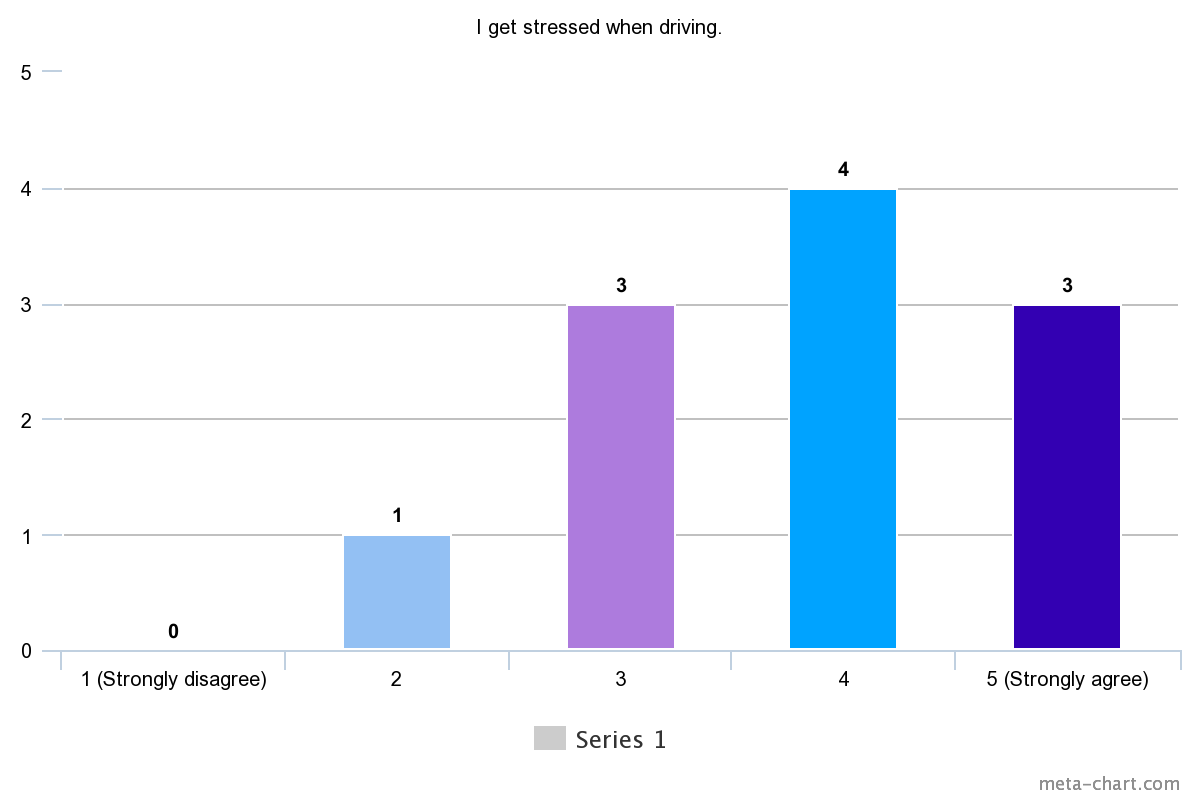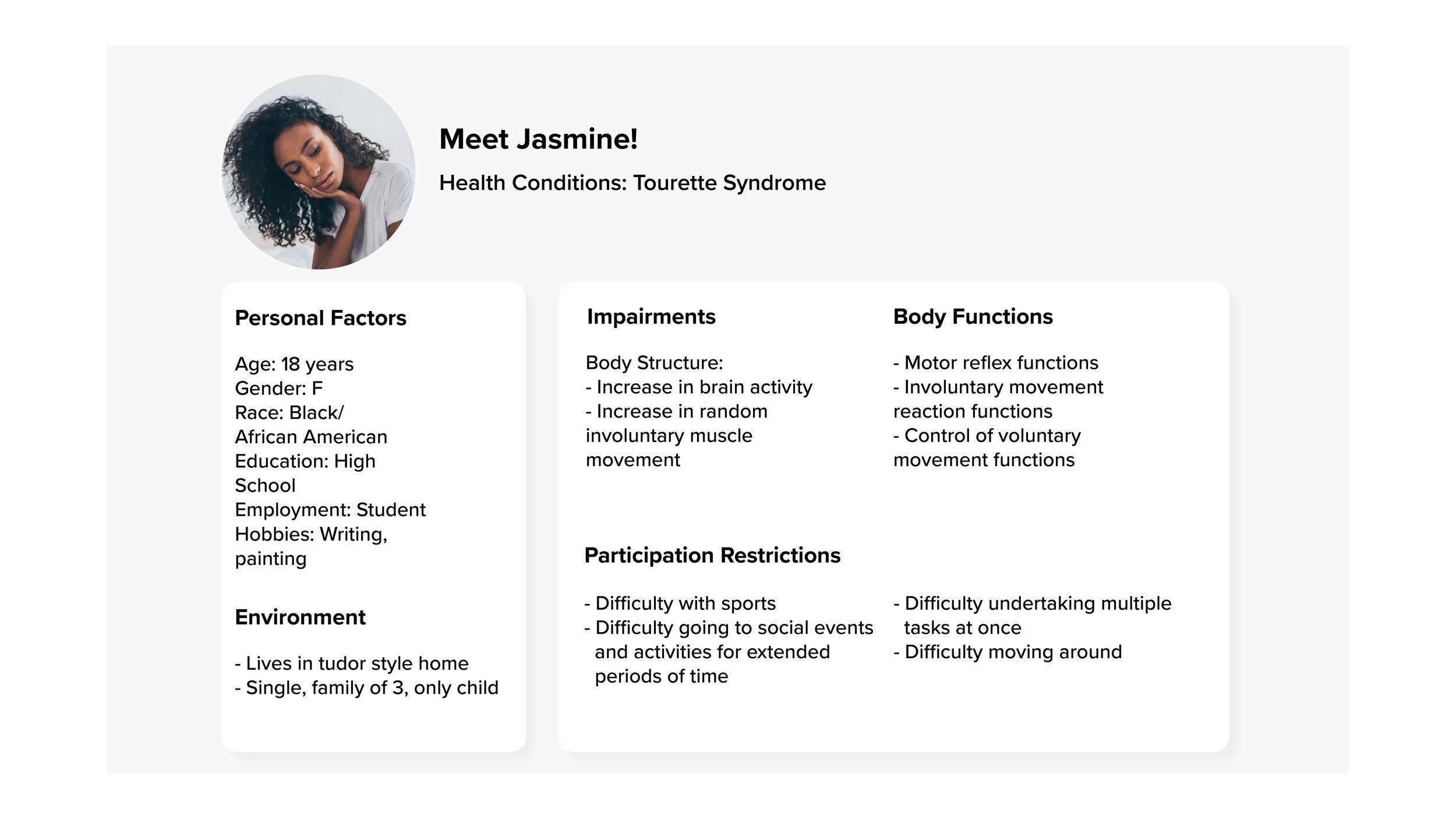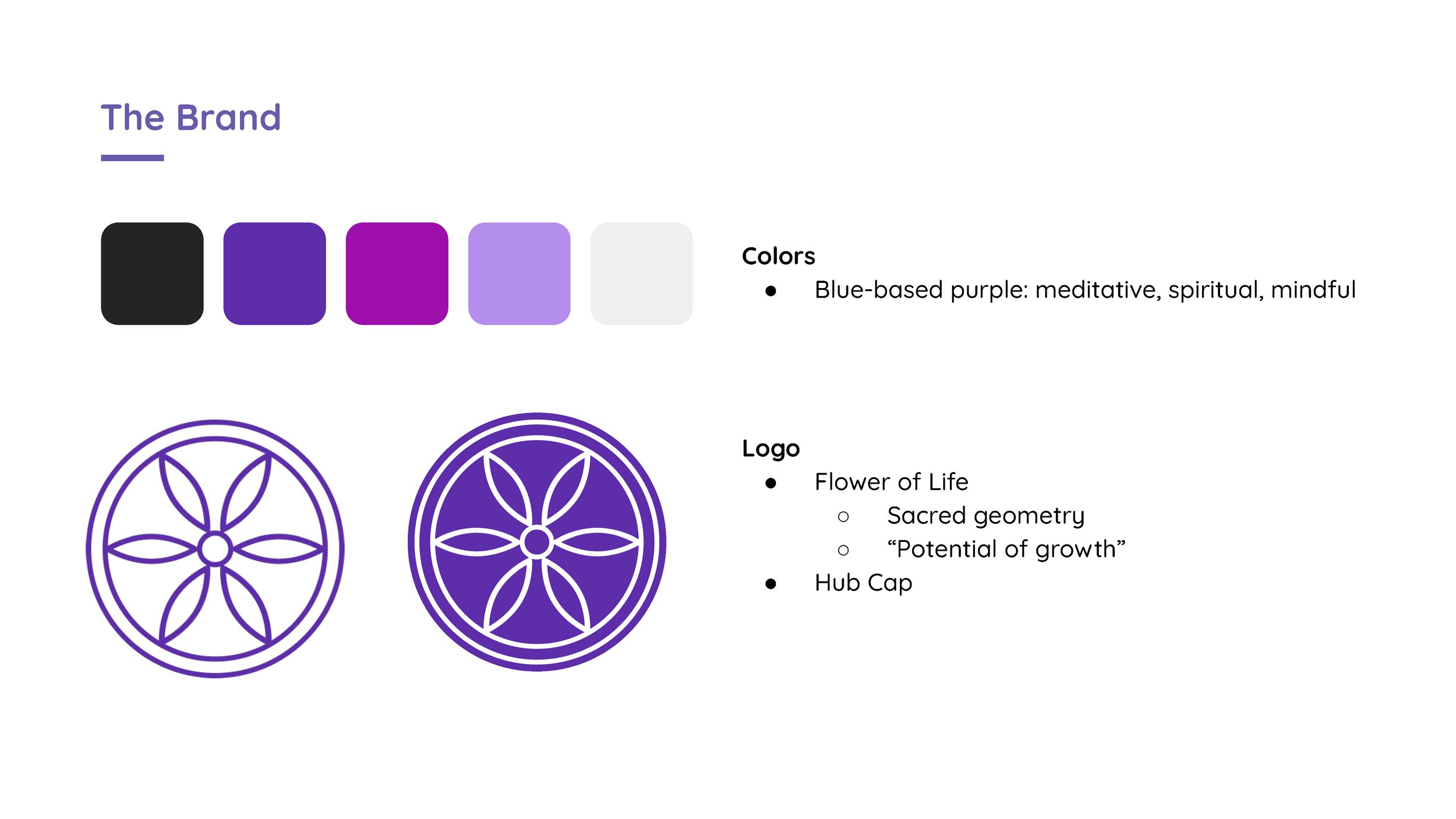
JOURNEY
Driving Anxiety Design
Duration: 15 weeks
Personal Project
HOW MIGHT WE… assist young adults in adopting mental wellbeing behaviors to better cope with the anxiety and stress induced by driving?
RESEARCH
OBSERVATIONS
Focal Points:
How drivers react in parking lots filled with multiple other vehicles and pedestrians
How drivers react while approaching, arriving at, and leaving intersections
How drivers interact with stop lights on campus
How drivers interact with pedestrians
Context/Environment:
Tech Square intersection - Sunday, 3:00pm
Howey Parking Lot & Student Center Parking Garage - Sunday, 4:00pm
Fowler St NW - Monday, 11:00am
Ferst Drive - Monday, 2:00pm
Insights:
Drivers in parking lots & parking garages are aggressive and drive recklessly
Cars slow down near pedestrians bu their speed increases significantly after they pass
Drivers seem either very hesitant or very aggressive
Facility maintenance trucks drove at significantly higher speeds near intersections but were quicker to stop faster than others
Analyzing Data: Affinity Mapping
EMPATHY
RESEARCH METHODS
Participants
11 survey participants between the ages of 18-24
4 interview participants in early twenties with 5-7 years of driving experience
Data Collection Methods:
Online questionnaire
Interviews
Coding transcripts
KEY FINDINGS
64% of survey participants said their stress is caused by the actions of other drivers but are unsure of how to cope
While most participants make attempts to de-stress, they’re unsure of whether or not the methods they used worked
Stress in busy or crowded areas is significantly greater than in quieter, less busy areas
Secondary electronic devices cause the most distraction (i.e. phones)
DESIGN IMPLICATIONS
Must implement methods to decrease stress while driving that are specific to the driver
Must include a sensor or detection devices to help users monito and decrease stress levels
Must provide stable driving environment (safe space) for users
DEFINING THE PROJECT
PROJECT DESCRIPTION
With the increase in cars on the road, many drivers today find driving as a stressful activity. Therefore, our goal is to create a product that would allow drivers to decrease their stress and anxiety through proven methods. The target users are young drivers ages 18-30 who need to drive to classes, work, or social activities. Currently, there is one driving-specific product that assists in reducing driving anxiety and stress. This product is a partnership integrating Waze’s phone application with Headspace and is not yet on the market so not much is known about it. However, we found phone and phone applications to be one of the biggest distractions on the road, thus leading to unsafe driving. Therefore, there are no existing products that allow users to monitor and decrease their stress and anxiety when driving.
PERSONAS
In order to understand who we’re designing for, we created personas with specific health conditions that we would have to meet.
IDEATION
TASK EXAMPLES
Persona: Jasmine (Health Condition(s): Tourette’s Syndrome)
Unlock the car
Step into the car
Sit down
Put on seatbelt
Turn on car
Put foot on brake
Press a button/insert keys and rotate
Holds breath
Releases breath when car turns on
Turns on GPS/pull up directions
Opens phone, opens app, inserts desired destination
Turns on radio/bluetooth music —> keeps her tics at bay
Takes a breath —> calms herself
Begins driving
Sings out loud/talks to herself —> helps her keep control
Parks car
Persona: Christina (Health Condition(s): Generalized Anxiety Disorder, SOcial Anxiety, ADHD)
Mentally prepares to drive
Ques up songs/podcast —> doesn’t like being alone
Gets into car
Turns on background noise
Bucles in
Adjusts seat and side/rear view mirrors —> has to double check
Turns on GPS/pulls up directions
Opens phone, opens app, inserts desired destination
Turns audio all the way up
Faces her phone away from her
Begins driving
Ocassionally looks at phone
Sings/talks to herself
Bounces her legs up and down
Parks car
DESIGN REQUIREMENTS
Absolutely Must Include
Stress detection methods to help drivers cope
Haptics
Audio
Personalization
Different methods to cope
Should Include
Access to other applications
Could Include
Visual creation of a safe space
Aromatherapy
Could Exclude/Infeasible
Too many visuals on electronic devices
Built-in interface
REFINED DESIGN DIRECTION
Design for mindfulness
Improve multi-sensorial communication between the user and interfaces
Provide a sense of control
Objective: Design for a sense of control through encouraging mindfulness through the implementation of scientifically proven de-stressing methods that allow environmental mastery for the user while on the road.
Environmental mastery - the ability to choose or change the surrounding context using physical or mental actions as well as being able to control events
CONCEPTUAL MODEL
Metaphor: exercise studio
Concepts:
exercise instructor is the voice of the driving system
exercise studio is the system itself
exercises/equipment are the breathing exercises of driving system
students in the exercise class are the drivers
Relationships:
instructor is contained in the exercise studio
instructors guide people through the exercises
students take the class
students are strengthened by the exercises they take
CONCEPTUAL MODEL STORYBOARD
PARTICIPATORY DESIGN WORKSHOP
GOALS
Better understand other ways of mindfulness that could be included
Gain a better sense of how to incorporate music and audio
Ta-Da!
Heart rate tracking
Picking playlists based on mood
Incorporating fun with a driving “theme”
KEY INSIGHTS
More control = better for the driver
AI is only there to help guide users
Users’ moodinfluences the music played
Users’ mood influences their driving habits
Users’ music choice can influence driving habits
PROTOTYPING
ACCESSIBILITY CONSIDERATIONS
Visual Accessibility
Font size & weight
Light & dark mode
Content Accessibility
Visual, tactical, and audio cues
No need for alternative text
Language Accessibility
Common English words used

Branding
THE APPLICATION
FINAL THOUGHTS
Throughout the creation of JOURNEY, I found out just how much user research and input could help in terms of the final design. I had never done a participatory workshop so I found that was helpful in getting the users involved in a very proactive and productive way. Likewise, I had never created a conceptual model and I found it easier to process our overall idea for what we wanted by using metaphors to better understand it ourselves and explain it to others.
If I had the more time with this project, I would have liked to involve more of the audio we had recorded for the exercises and integrate them into the prototype rather than having them separate from the prototype and playing it over.
Overall though, I really value the experience I gained in user experience research and gained a new perspective on the benefits of it as well.














